7 Exercises For Vertigo You Can Do At Home (With Pictures)
Best exercises to help you control dizziness and nausea and regain your center of balance.

Image: iStock
Specific exercises can help alleviate vertigo symptoms such as dizziness. No, you don’t need to climb a tower to experience vertigo. People with vertigo can experience a spinning sensation while sitting or even without moving an inch. This condition can be due to ear infections, inflammation, abnormal bone growth, inflammation, middle ear calcium deposits (benign paroxysmal positional vertigo or BPPV), or head trauma (1).
While vertigo can be uncomfortable, some exercises can help to alleviate symptoms and improve overall balance and coordination. If you have been diagnosed with BPPV, try these 7 exercises at home. Always be sure to first consult with your clinician. This article also suggests which exercises to avoid and other precautions to take. Read on to get all the information in one place!
 Workout Blueprint: Exercises For Vertigo
Workout Blueprint: Exercises For Vertigo- Frequency: Daily
- Benefits: Improve overall balance and coordination.
- Equipment Needed: Bench, chair, exercise mat.
- Space Required: Small area
- Assistance Required: Yes, for certain exercises.
- Who Should Avoid: Anyone who experiences shortness of breath and dizziness during the exercises.
In This Article
7 Best Exercises For Vertigo (With Pictures)
Vertigo often impacts the overall balance of the body which adds to the disorientation an individual experiences. And that is why doing balance exercises daily can be beneficial for those who frequently experience dizziness. However, when you exercise, make sure someone is around to help you if you need it. Avoid sudden movements and use chairs or tables to steady yourself. Here are some special exercises for vertigo that can especially improve balance and ease dizziness.
1. Brandt-Daroff Exercise

How To Do
- Sit at the end of your bed.
- Lie down on your left side and turn your head 45° to the right (nose pointing up).
- Hold the position for 30 seconds until the dizziness fades.
- Sit up and wait for 30 seconds.
- Repeat on the other side.
- Do this five times, twice a day.
Note: This exercise is not advised for anyone who has a history of falls, neck issues, or extreme motion sensitivity.
2. Epley Maneuver
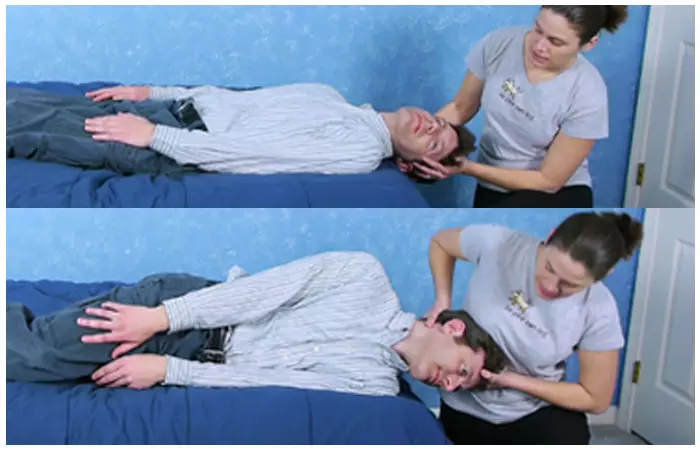
Note: Perform this exercise for vertigo only under supervision.
How To Do
- Sit at the end of your bed and turn your head 45° to the right.
- Lie down, maintaining the head’s position. Ask your physical therapist to support your head and neck.
- Your neck will be at a 30° extension. Maintain the position for 30 seconds.
- Turn your body to the right. The physical therapist will support your head while you turn. Hold this position for about 20-30 seconds.
- Repeat on the left side.
- To get up into a sitting position, hold your head at a 45° angle, flex your knees, drop your legs off the bed, and push yourself up with your hands. Your physical therapist will support your head.
- Slowly, turn your head to look straight.
Note: Use caution when performing this exercise as it may cause temporary vertigo. Particularly for first-time users, it is best performed under a healthcare provider’s supervision. It is not suitable for people with neck or spine issues and severe heart conditions.
 Quick Tip
Quick Tip3. Semont Liberatory Maneuver
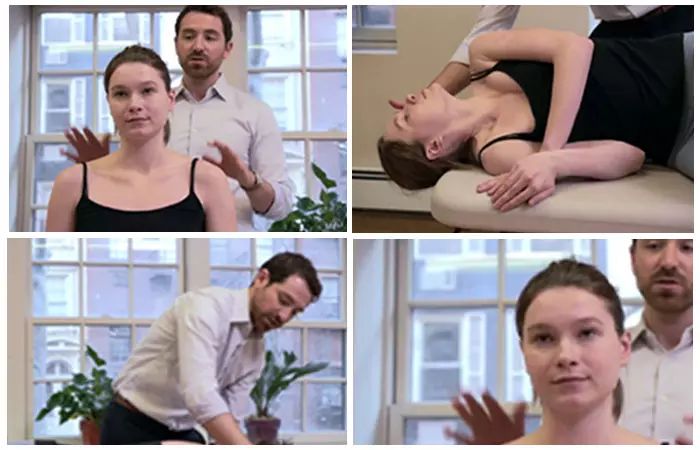
How To Do
- Sit at the end of your bed and turn your head 45° to the right.
- Lie down on your left, maintaining your head’s position (nose pointing up). Hold the position for 60 seconds.
- Get up to the sitting position and lie down quickly on your right, with your face facing the bed. Remain still for 60 seconds.
- Return to a sitting position and sit for 5 minutes.
- For right ear issues, reverse all directions.
Note: This exercise is not suitable for those with cervical spine disorders, severe balance problems, or inner ear infections.
4. Foster (Half Somersault) Maneuver
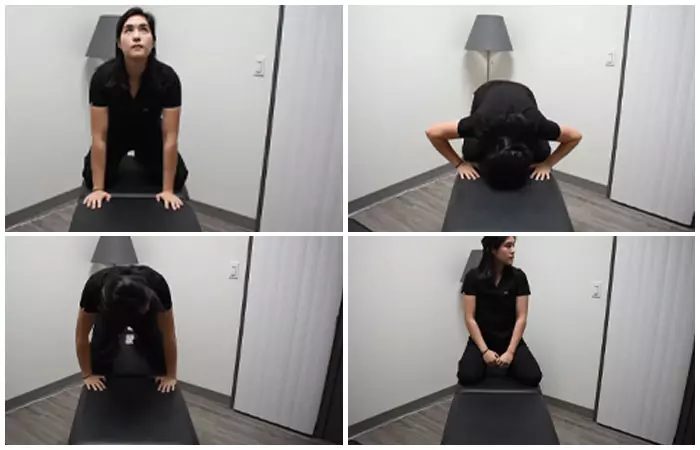
How To Do
- Kneel on a bench with the palms flat on it and look down.
- Tilt your head up and look at the ceiling.
- Hold this pose for 15 seconds.
- Put your head on the bench in a half-somersault position and tuck your chin towards your knees.
- Hold this position for 15 seconds.
- Turn your head to the right at a 45° angle.
- Hold this for 15 seconds.
- Hold the head in the same position and extend your arms. Hold this for 15 seconds.
- Keep your head in the same position, remove your hands from the bench, and get into a kneeling position. Hold this position for 15 seconds.
- Repeat the steps in the other direction.
Note: Avoid if you struggle to switch between positions, have high blood pressure, or have spinal problems.
5. Gaze Stabilization Exercise
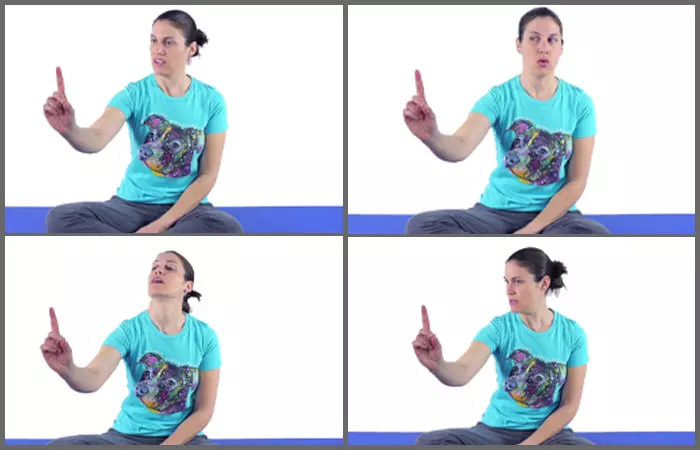
How To Do
- Sit on a mat or bed.
- Extend one arm with your index finger out.
- Look at the index finger for 15 seconds.
- Turn your head to the right and left slowly with your eyes fixed on the tip of your index finger.
- Do this for 10 seconds.
- Move your head up and down with your gaze fixed on the index finger.
- Do this for 10 seconds.
- Move your head diagonally up and down with your gaze fixed on the index finger. Do this for 10 seconds.
- Do the same on the other side.
Note: People who suffer from severe migraines or have visual impairments should exercise caution while trying this exercise.
6. Romberg Stance
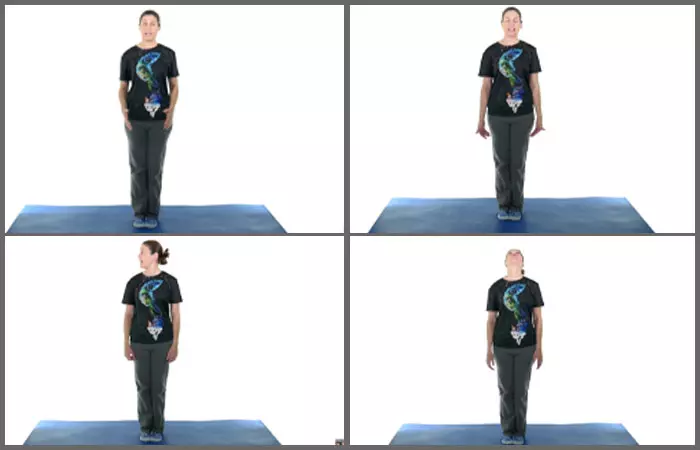
How To Do
- Stand with your feet close. You may hold on to a wall or a chair.
- Close your eyes. Keep your head straight.
- Hold this for 15 seconds.
- Open your eyes and turn your head side to side.
- Do this for 10-15 seconds.
- Move your head up and down.
- Do this for 15 seconds.
- Repeat the steps with your eyes closed.
Note: It is not advised for people with severe balance difficulties unless they are supported or monitored.
7. Single Leg Balance

How To Do
- Stand straight with your feet hip-width apart. You may hold a chair or a wall for support.
- Lift your left foot off the floor, flex your knee, and balance your body weight on the right leg.
- Hold this position for 10 seconds.
- Repeat with your right foot.
- If comfortable, you can move your head side-to-side and up and down while doing the leg balance.
Note: Avoid if you have musculoskeletal problems that impair your stability or if you are at a high risk of falling.
You can perform these exercises every day under the supervision of an experienced physical therapist to reduce vertigo caused by BPPV. However, if you have an ear infection or head trauma, consult a doctor and get medications before starting these exercises. The repetitive movement during exercises helps manage the sudden symptoms of vertigo. Let’s understand how.
Key Takeaways
- Vertigo can cause people to feel like spinning while sitting or even without moving an inch.
- Ear infections, inflammation, irregular bone growth, middle ear calcium deposits, or head trauma contribute to this condition.
- Various forms of exercise therapies, such as vestibular rehabilitation therapy, gaze stabilization exercises, head-elevated activities, proprioceptive/balance exercises, and eye tracking exercises, can help manage this condition.
How Exercising Benefits Vertigo
Dr. Daniel Boyer, MD, says, “Exercise helps to redistribute the calcium carbonate crystals in the inner ear.” The redistributed calcium carbonate crystals help maintain proper body balance. Research also shows that people with BPPV respond well and get faster relief from vertigo after doing the maneuvers mentioned above (2), (3).
Your doctor may recommend different types of balance training exercises or therapies depending on what is triggering your vertigo. Here’s a breakdown of the therapies:
- Vestibular Rehabilitation Therapy: This therapy uses exercises to strengthen the vestibular system – the ear parts responsible for maintaining balance. The goal of this therapy is to improve the patient’s symptoms and maintain healthy inner ear function. Epley Maneuver/Repositioning Maneuver (recommended for people with BPPV) is an example of this type of therapy.
- Gaze Stabilization Exercises: These exercises help maintain balance by improving your ability to focus on a stationary object while the head moves around.
- Head-Elevated Activities: This type of therapy helps reduce the number of episodes of vertigo. It can also help improve symptoms associated with dizziness, such as difficulty in concentration and thinking.
- Proprioceptive/Balance Exercises: This type of therapy helps reduce vertigo symptoms and improve balance.
- Eye Tracking Exercises: This therapy may help reduce the number of episodes of vertigo.
Note: If you experience vertigo, certain movements may worsen symptoms. So, professional guidance is essential before attempting any exercises.
Certain specific exercise forms that involve repetitive movements, like tai chi, pilates, and aerobic exercises can also help with improving balance. While these maneuvers and exercises can greatly help people with vertigo, certain exercises may trigger vertigo. Scroll down to find out what they are.
Which Exercises To Avoid And Why
Exercises that involve serious head movements, like swimming, may worsen vertigo. Vigorous head movements may move the calcium crystals in your ears much faster and affect your balance. Avoid sit-ups and yoga as they may set off positional vertigo or worsen it. Consult a professional to also discuss what kind of exercises to include in your strength training sessions. Be careful and gentle with neck exercises as well.
While it is best to take a break from traditional exercises, it is also important to follow all safety measures while doing the seven exercises mentioned above.
Safety Precautions To Take
- Stand near a wall or handrail, set up a chair or walker, or use some form of support to maintain your balance.
- Ask someone to stand close by as you do these exercises.
- Do not use throw rugs. Instead, use an anti-slip mat.
- Avoid sudden head movements.
- Keep the floors dry to prevent slipping.
- Store household items on low shelves to eliminate the need to climb or reach high.
- Install grab bars near the bathtub and toilet.
- Do not rely on exercise alone to treat vertigo. Seek medical attention to treat conditions like a bacterial ear infection.
Rachel Kay, a vlogger, shared her experience of treating vertigo and the tips she followed to avoid triggering an episode. She said, “I made sure I wasn’t doing any sudden movements. I also tried to get rid of stress. Those tips have really helped me (i).”
 Quick Tip
Quick TipInfographic: Top 5 Effective Exercises For Vertigo
Vertigo can make you experience a spinning sensation even while you are sitting. Although the condition has no cure, you can manage it with physical exercises. Scroll down to the infographic below to check out some effective exercises for vertigo you can do at home.

Illustration: StyleCraze Design Team
Vertigo is characterized by a spinning sensation that can appear suddenly. There are various causes of vertigo and different treatment options for each. To manage benign paroxysmal positional vertigo (BPPV) induced by calcium deposits in the middle ear, you can practice certain exercises at home. If you want to recuperate and get relief faster, do these exercises for vertigo on a regular basis under the direction of a trained physical therapist. For vertigo that is caused by other underlying conditions, these exercises alone may not be enough, and you may also need to take the prescribed medicines and therapies. Include meditation and relaxation techniques in your regular lifestyle for overall wellness.
Frequently Asked Questions
What is the fastest way to cure vertigo?
Epley maneuver or canalith repositioning technique usually helps with vertigo faster. Other than these, you may try home remedies for vertigo like aromatherapy with essential oils or drinking ginger tea, and support it with a diet rich in Vitamin B3 and potassium.
Is walking good for vertigo?
Yes, walking is a simple, low-impact exercise that can improve balance and help with vertigo.
Does shaking your head help vertigo?
Yes, studies suggest that shaking your head before Epley maneuver can help improve the signs of vertigo (4).
Find relief from vertigo with simple exercises for BPPV. Take control of your balance and regain your quality of life. Watch the video and reclaim your stability now.
Personal Experience: Source
StyleCraze's articles are interwoven with authentic personal narratives that provide depth and resonance to our content. Below are the sources of the personal accounts referenced in this article.
i. How I Cured My Vertigohttps://www.youtube.com/watch?v=WOaJNiYRjyI
References
Articles on StyleCraze are backed by verified information from peer-reviewed and academic research papers, reputed organizations, research institutions, and medical associations to ensure accuracy and relevance. Read our editorial policy to learn more.
- Vertigo
https://www.ncbi.nlm.nih.gov/books/NBK482356/ - Evaluation of vestibular exercises in the management of benign paroxysmal positional vertigo
https://www.ncbi.nlm.nih.gov/labs/pmc/articles/PMC3450312/ - Effect of Vestibular Exercises Associated With Repositioning Maneuvers in Patients With Benign Paroxysmal Positional Vertigo: A Randomized Controlled Clinical Trial
https://pubmed.ncbi.nlm.nih.gov/31356483/ - Original article Effect of applying head-shaking maneuver before Epley maneuver in BPPV
https://www.sciencedirect.com/science/article/pii/S1808869421000136
Read full bio of Rohan Arora
Read full bio of Ravi Teja Tadimalla
Read full bio of Sindhu Koganti







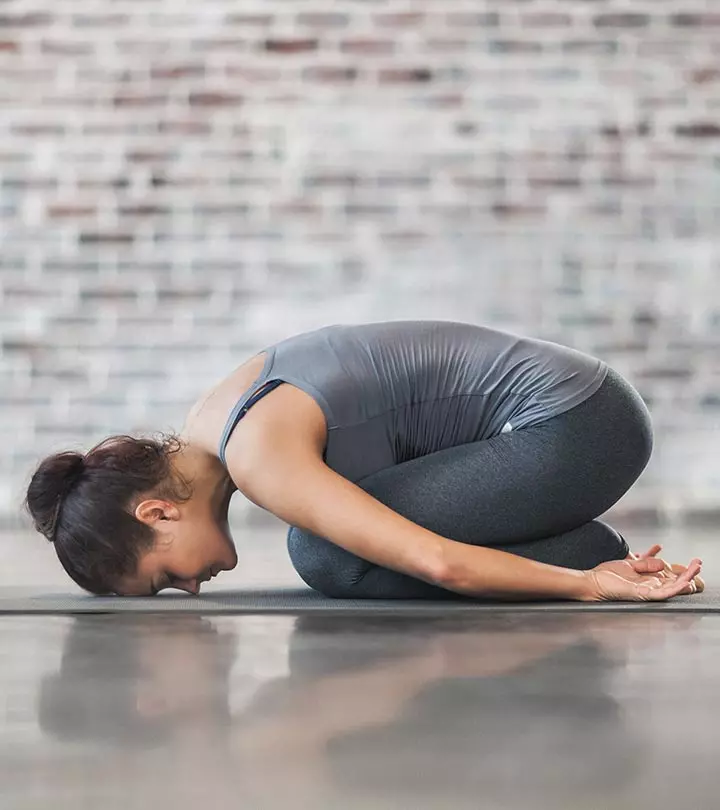

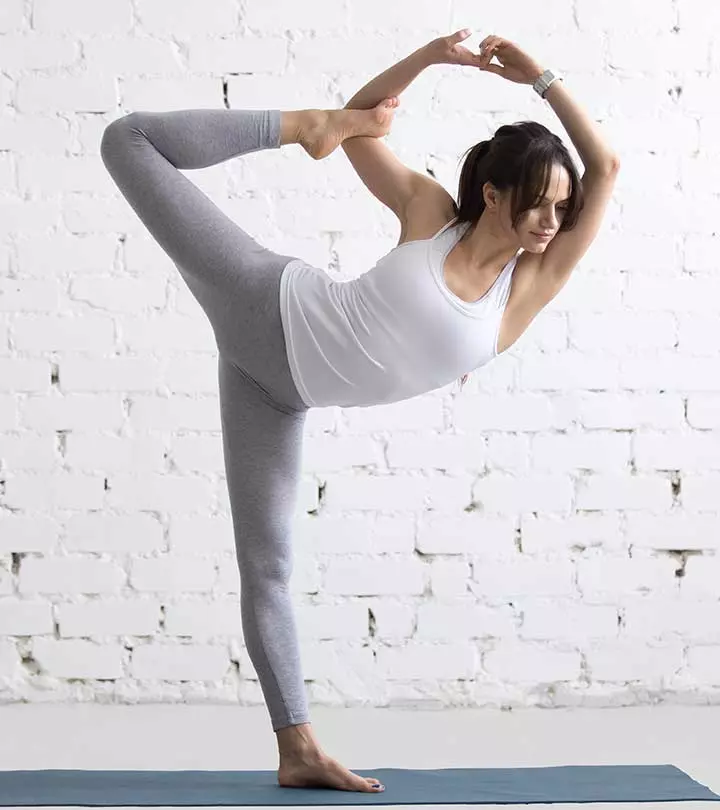

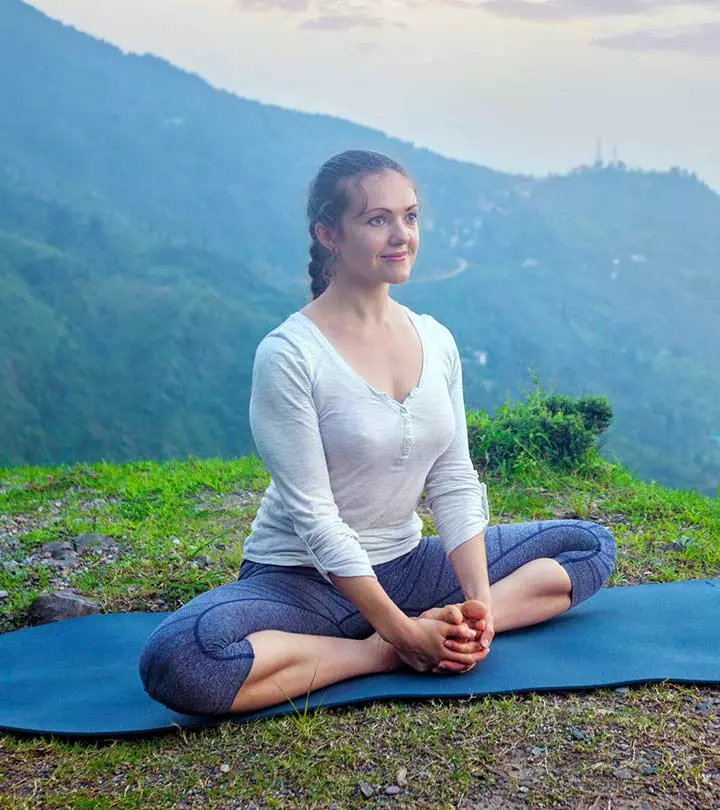

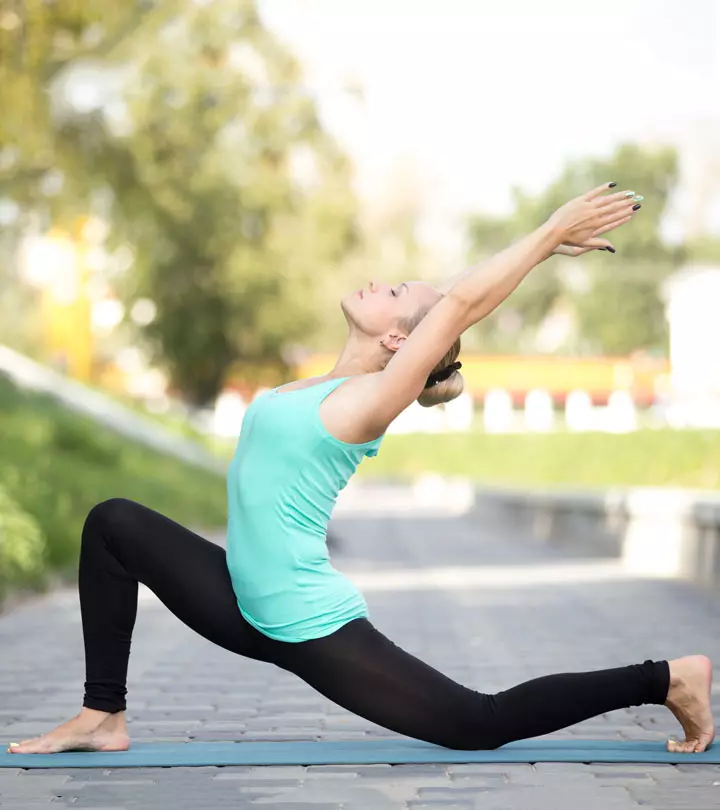


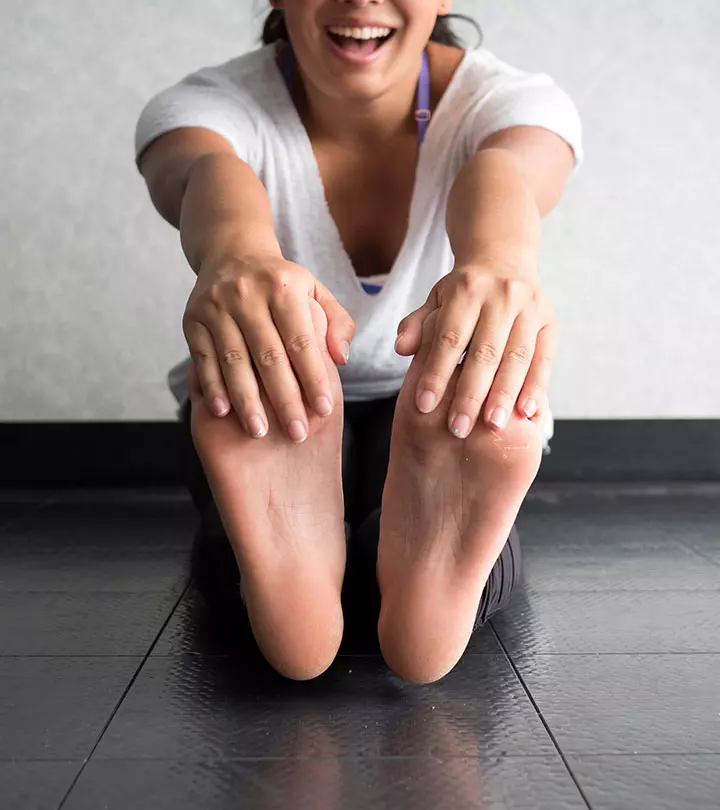



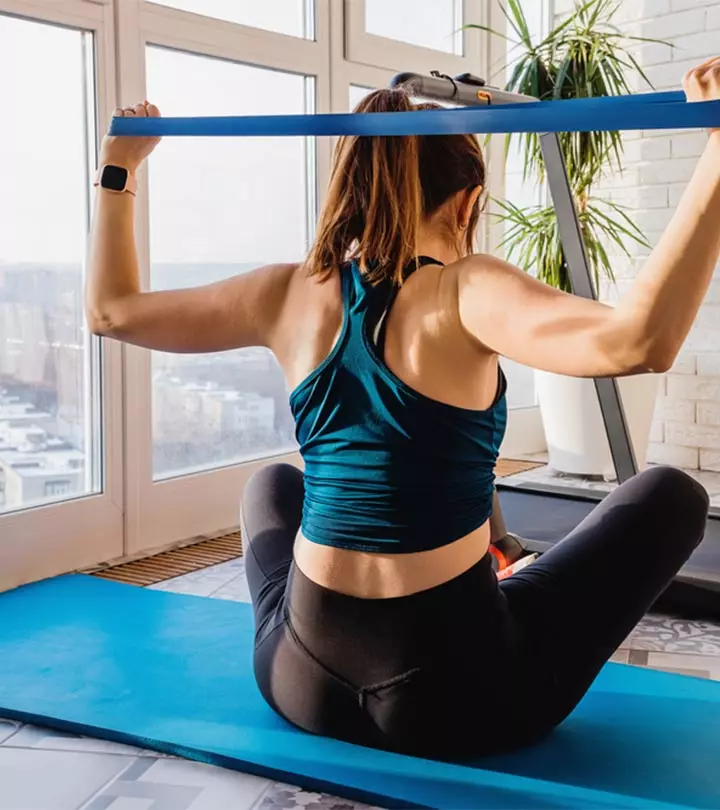



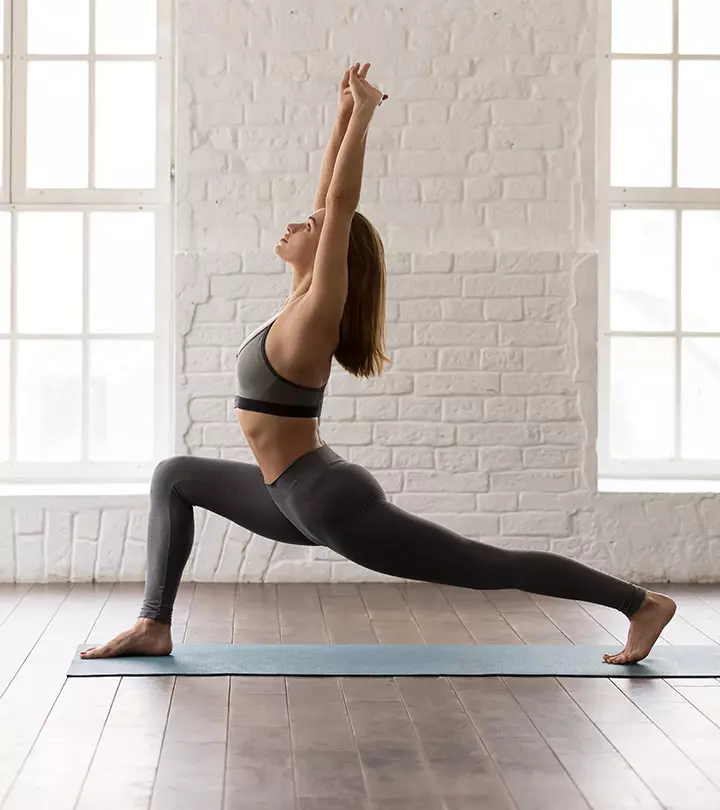
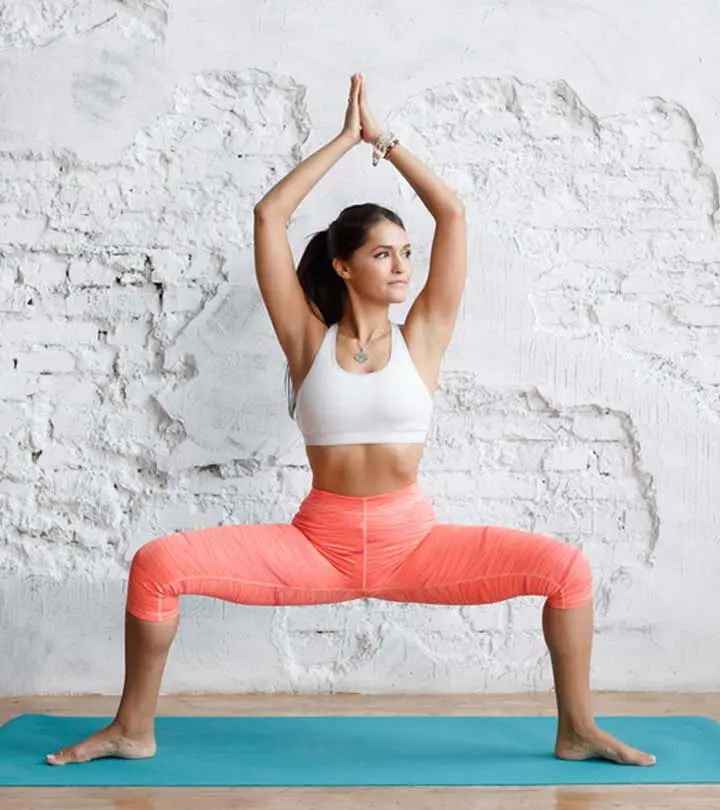
Community Experiences
Join the conversation and become a part of our empowering community! Share your stories, experiences, and insights to connect with other beauty, lifestyle, and health enthusiasts.